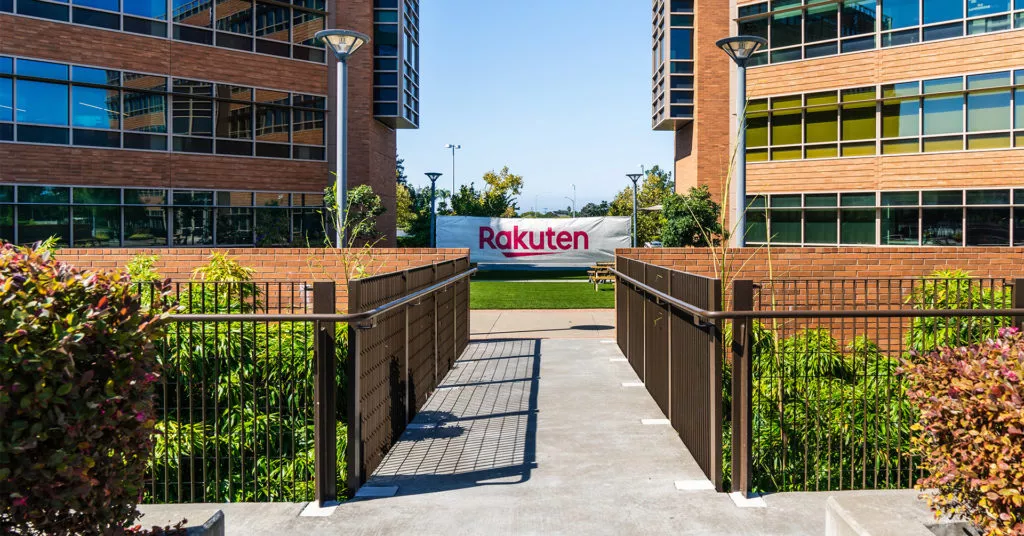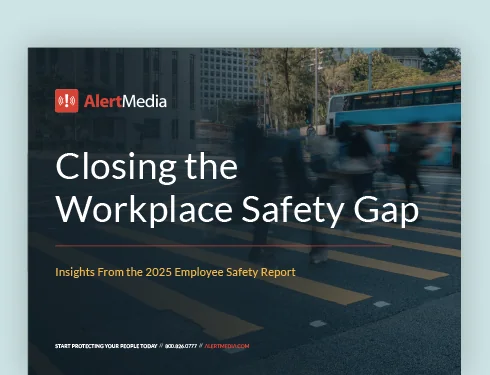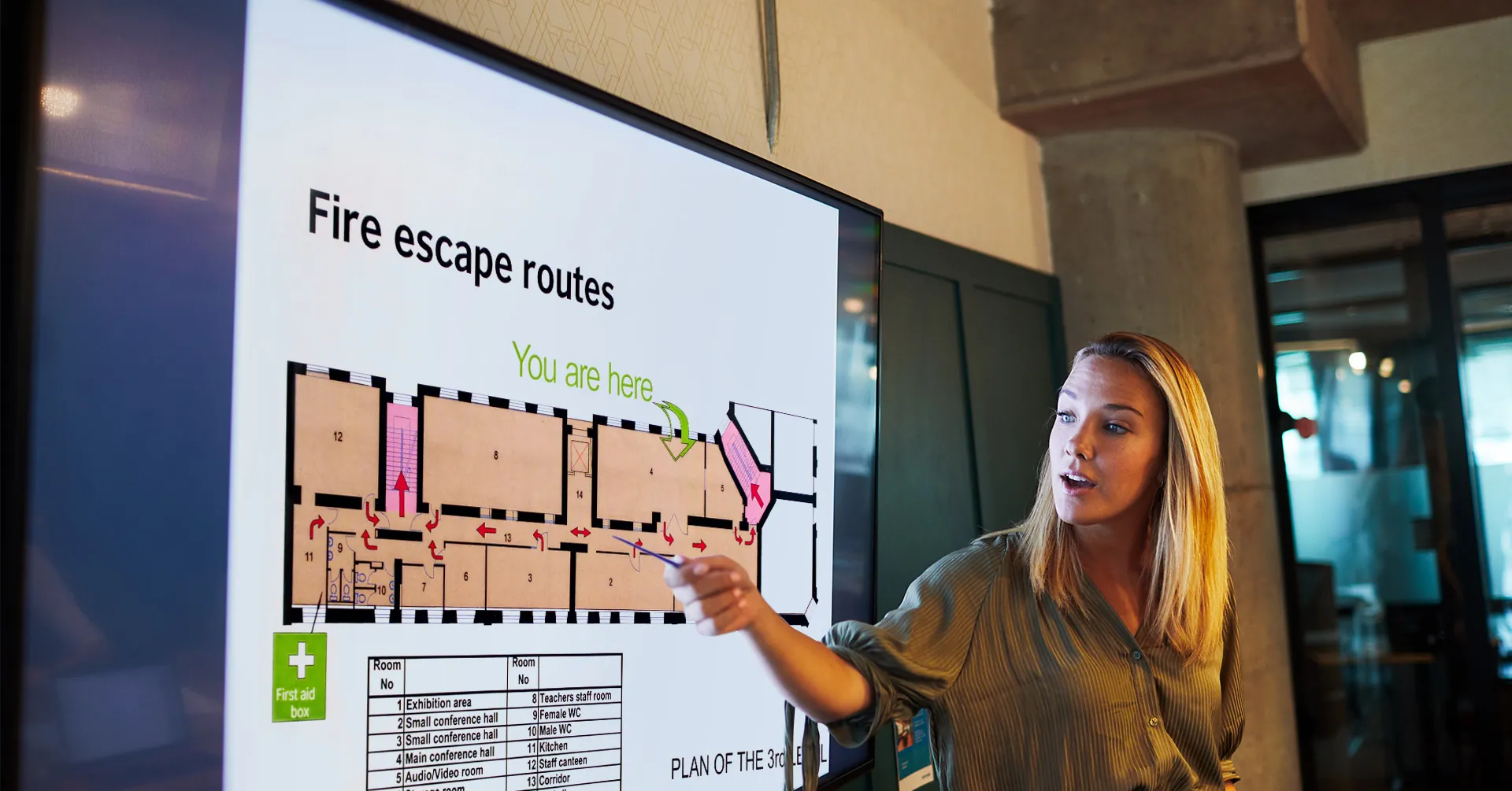
How Rakuten Creates Cohesive Safety Programs
Donna Kelly, Head of Facilities at Rakuten Americas, shares how the company has implemented consistent safety programs across multiple locations to empower their facilities teams.

Rakuten Americas has grown almost entirely through acquisitions. As a result, there was an organizational need for a cohesive facilities team.
That’s where Donna Kelly, Head of Facilities, came in. Her priority: creating a consistent safety program so that each site would have the same playbook when dealing with emergencies and other exceptional circumstances. In a recent episode of , Donna shared how Rakuten Americas elevates the visibility of the facilities team to enhance employee safety.
You can listen to the episode below.
Q&A With Donna Kelly, Head of Facilities, Rakuten Americas
Can you tell us about Rakuten Americas and your role there?
Rakuten Americas is the North American division of Rakuten Group, Inc., a global leader in internet services created in Japan in 1977.
Our presence in North America started in 2005 with an acquisition of a company called LinkShare. Since then, Rakuten Americas has grown entirely through acquisitions. Today, Rakuten Americas includes five business headquarters throughout North America. We also provide the launchpad for our overseas businesses looking to expand in the United States.
My role at Rakuten was created because there was a need for a cohesive facilities group as the company continues to grow. We have about 3,000 employees in the United States, and there are 11 sites in the United States that I manage from a facilities perspective. With COVID-19, I’m assisting with almost every site, as needed, but there are several other Rakuten entities throughout North America, Europe, and Australia that I assist with respect to real estate.
What was the safety culture like at Rakuten Americas when you first joined the organization?
Because Rakuten Americas arose entirely through acquisition, all the sites in our portfolio—except for our headquarters site in San Mateo—brought their own distinctive company cultures and processes when they became a part of Rakuten. So over the last two years, I have prioritized bringing all of our sites and people together under the same policies, procedures, and employee experience. One of my goals, when I started in mid-2019, was to create a consistent safety program so that each site has the same playbook in dealing with emergencies and other exceptional circumstances.
What was the structure of the facilities team at the time, and why was it important to you to distinguish facilities from other departments or teams?
Elevating facilities, in general, is really important to me. In a lot of companies, the Facility team structure is very simple. You have a director of facilities, and everybody else reports to that person. When I started, I saw an opportunity to create a nationwide structure for the Facilities team with defined job titles and descriptions.
It was important to me to make the Facilities team more visible to the employees. I wanted the site facility managers to take a more active role in implementing safety and the employee experience and ERP programs, so I met with the COO and shared my vision for facilities.
I started with individual career development. In our 1:1s, I made sure our COO knew every site manager’s name and their strengths. I wrote a one-sheet on every employee during my first year and shared that summary with my COO so that she knew who was managing each site.
Pre-COVID, not many people thought the work Facilities teams did was important, other than whatever the office manager did. However, there’s a big difference between a facilities manager and the old-fashioned term of an office manager. To make this distinction and improve career progression opportunities, I changed all of the employees’ titles on our team to a name that had the word ‘facilities’ in it.
“"Facilities managers build trust through effective communication—and building trust with site employees is critical."”Donna Kelly Head of Facilities, Rakuten Americas
In your opinion, does a company have to be a certain size to start thinking about or implementing a safety program?
No. With everything web-based now, it’s easier than ever to implement a safety program. I would dare say that it’s easier to do so when the company is smaller because there are so many programs and vendors and training companies who can scale with you as your company grows.
That’s one of the reasons why we chose AlertMedia—it’s very scalable, and that scaling is cost-effective. You can start small, get your feet wet, and learn. Then you’ll be able to grow and scale using great vendors, like AlertMedia.
What was your process for elevating the visibility of your facilities team at Rakuten Americas, and how did that process enhance employee safety?
As I stated, we changed job titles so that there’s a progression that you can match outside of Rakuten in a typical facilities career path. Also, we want to make sure that each employee feels empowered to manage the safety at their site.
I encourage them all to take the safety response plans that I put together, along with AlertMedia, and customize programs to their site. Not every site has an elevator, not every site is in a multi-tenant building, so you have to customize your own ERP to your facility. That’s what we did with our employees. I empowered them to manage their own safety plan and insert themselves into the new hire orientation process to ensure that new hires get trained on safety, including evacuation plans, ERP, and how to sign up for AlertMedia to get notified of events happening in their specific area.
As it relates to employees’ safety, I let them be their own AlertMedia Admin for their site. For example, if Jessica works in Tampa, she can and should manage her site because she knows more about the hurricane that’s coming than I do in California. She can send out her own messages, as appropriate. That control over their site makes them feel like true Facilities leaders.
How does your facilities team incorporate communications into their roles, and how important is effective communication in your safety program?
One of my big mantras is, “overcommunicate, overcommunicate, overcommunicate.”
Employees, in general, want to hear about their building, they want to hear about safety, and they want to know who to contact to solve issues and emergencies. Facilities managers build trust through effective communication—and building trust with site employees is critical.
Empowering our facilities managers to oversee the use of AlertMedia for their sites increased the level of trust. When an employee receives an alert from their facilities manager, they listen. It’s not some other person that they don’t know, calling from Seattle saying, “Hey, there’s a hurricane.” Our process makes things more personal between the employees and the local facilities manager with respect to safety communications.
What internal resources do the facilities team use to help them succeed?
We have a very strong and robust Americas communications team. They help us craft concise messaging to our employees, whether it’s sending an email or a multichannel notification through AlertMedia. The ability to have the templates from AlertMedia that we can modify has also been a great resource. We also work with compliance, legal, and HR teams to ensure that our safety programs and any other employee experience program we’re rolling out meets all requirements for training or notification.
In late 2019, I worked with our compliance team to create a required online training that is now used nationwide for all employees. We’ve integrated how we use AlertMedia into that training as well. Having leadership support is critical because if it’s important to our leaders, then it’s important to everybody else.
What can someone do today to help improve their company’s safety culture?
Number one—your employees are your most valuable asset. As a leader, it’s your responsibility to nurture their desire to grow and develop their skillsets. If an employee believes that you have a vested interest in their future, they will be more open with you. They’ll work harder, and they’ll ask for new challenges.
With respect to safety, most facilities employees have never spent more time on safety than they are spending now.
“Safety first” is the new norm, so it’s the perfect time to incorporate effective communication into your safety plans. And it’s not just sending emails. Some employees don’t read all the emails they get from every department, but they will read a text. So using an easy-to-use communication system like AlertMedia is critical.





